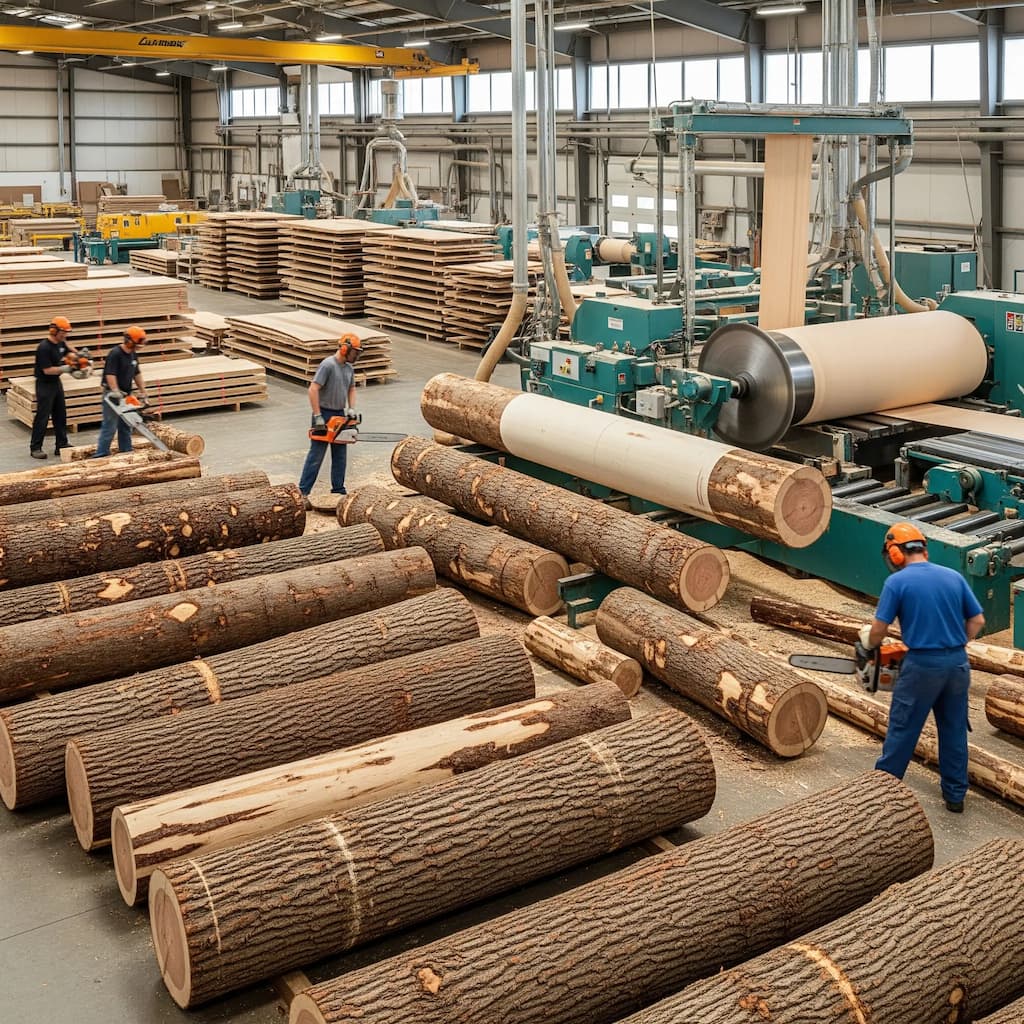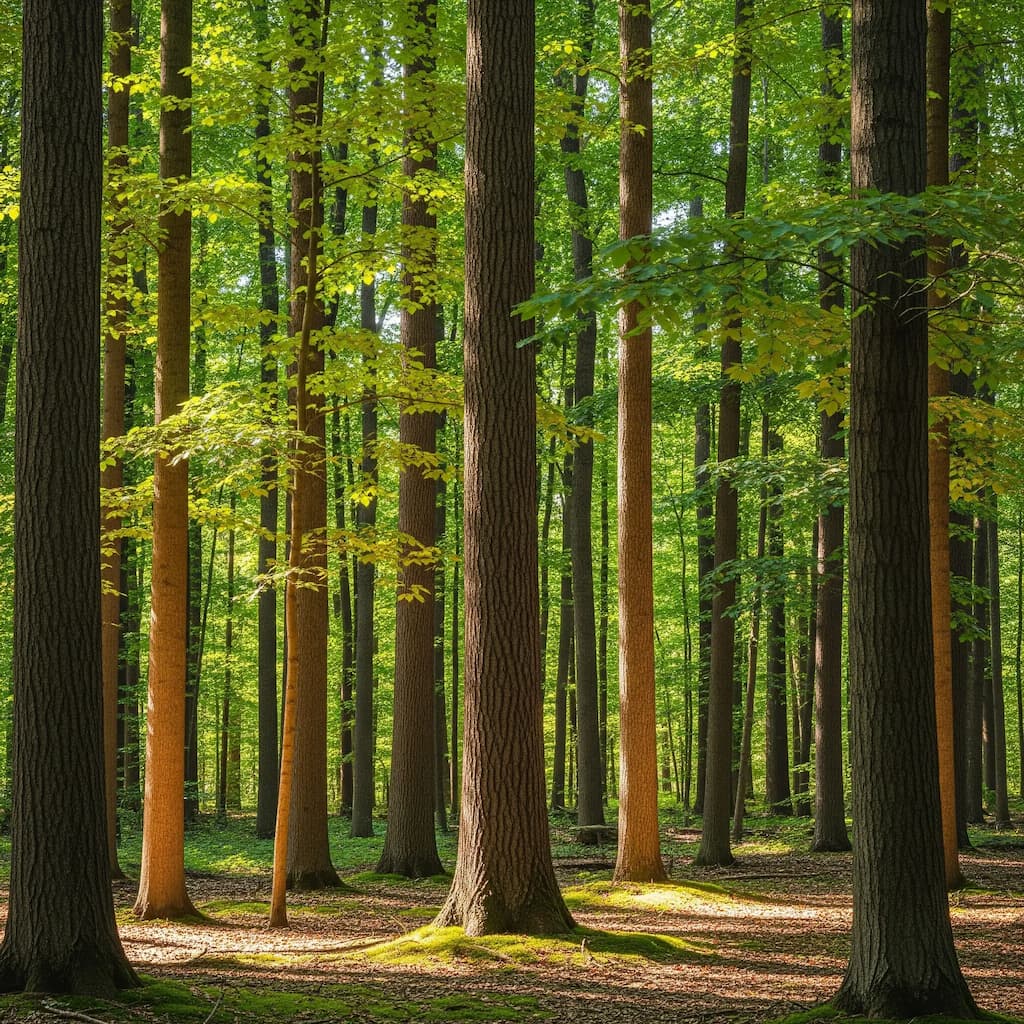

News
- Home
- News
- News Category
- Is Natural Wood Veneer Eco-Friendly? Sustainability Benefits Explained
Is Natural Wood Veneer Eco-Friendly? Sustainability Benefits Explained
In an era where environmental consciousness drives consumer choices, many architects, designers, and homeowners are questioning whether natural wood veneer truly represents a sustainable building material. The answer is a resounding yes – when sourced responsibly and manufactured with environmental considerations, sustainable wood veneer offers significant ecological advantages over both solid wood alternatives and synthetic materials.
Resource Efficiency: Maximizing Every Log

To understand wood veneer's environmental impact, start with what it is: thin slices of wood peeled or sliced from a log. This process fundamentally changes the sustainability equation, creating dramatically improved resource efficiency compared to solid wood.
This is arguably Veneer's most compelling environmental advantage. While traditional solid wood manufacturing uses only 40-60% of a tree, veneer production can use up to 90% of a log through sophisticated slicing techniques.
For example, a single walnut log might only yield enough solid lumber for one dining table. However, that same log, when processed into veneer, can create beautiful surfaces for dozens of furniture pieces, architectural panels, or cabinetry projects. This efficiency also extends beyond volume. Veneer allows manufacturers to showcase the most beautiful grain patterns and figures, ensuring the aesthetic value of premium logs is maximized instead of being hidden inside thick solid wood pieces.
Renewable Resource with Minimal Waste
Sustainable wood veneer uses wood's natural, renewable qualities while maximizing efficiency. Unlike synthetic materials from finite fossil fuels, wood actively removes carbon dioxide from the atmosphere as it grows through photosynthesis.
Advanced production facilities use sophisticated recovery systems to repurpose wood scraps, dust, and fragments. Modern manufacturers have created "closed-loop systems" where sawdust becomes biomass fuel and wood chips are turned into composite materials. This ensures nearly every part of the tree contributes to the final product, preventing waste.
Responsibly managed forests operate on sustainable cycles: trees are harvested at maturity and immediately replanted. This continuous cycle of carbon capture and material production, combined with minimal manufacturing waste, makes FSC veneer and other certified products a truly sustainable choice.
Critical Role of Environmental Certifications
Environmental certifications serve as the cornerstone of truly sustainable wood veneer. The Forest Stewardship Council (FSC) certification ensures that wood products come from forests managed according to strict environmental and social standards. FSC veneer guarantees that harvested trees come from sustainably replanted forests rather than from illegal deforestation or protected ecosystems.
Other key certifications include:
- PEFC: Another internationally recognized standard for sustainable forest management.
- CITES: Ensures that no endangered wood species are used in production.
Ho Bridge, Taiwan's first FSC-certified veneer manufacturer, demonstrates a commitment beyond mere certification. Our chemical-free production process eliminates toxic waste and wastewater, protecting both the environment and its workers.
The Longevity and Durability Advantages of Natural Veneer
High-quality veneer products demonstrate exceptional longevity, often lasting decades with proper care. This durability translates directly into reduced environmental impact through decreased replacement frequency. The "use it well, make it fine" philosophy emphasizes creating durable products that extend lifespans, encouraging consumers to reduce resource consumption.
Environmental Comparison: Veneer vs. Alternative Materials
| Material Type | Resource Efficiency | Renewability | Manufacturing Impact | Longevity | Carbon Footprint |
|---|---|---|---|---|---|
| Natural Wood Veneer | Excellent (90% log utilization) | Fully Renewable | Low (chemical-free processes available) | High (decades with care) | Negative (carbon sequestration) |
| Solid Wood | Moderate (40-60% utilization) | Fully Renewable | Moderate | High | Negative (carbon sequestration) |
| Laminate/Synthetic | Poor (petroleum-based) | Non-renewable | High (chemical processes) | Moderate | Positive (fossil fuel based) |
| Metal Finishes | Poor (mining required) | Non-renewable | Very High (energy intensive) | High | High (energy-intensive production) |
| Plastic Veneers | Poor (petroleum-based) | Non-renewable | High (toxic processes) | Low-Moderate | High (fossil fuel based) |
Veneer vs. Laminate: Which Is Better for Your Project?
Green Building Material Applications
Sustainable wood veneer qualifies as a premium green building material in contemporary construction and design projects. LEED (Leadership in Energy and Environmental Design) certification programs recognize responsibly sourced wood veneers as contributing toward sustainable building credits.
The natural properties of wood veneer provide additional environmental benefits, including natural insulation properties, moisture regulation, and the creation of healthier indoor air quality compared to synthetic alternatives that may off-gas volatile organic compounds.
Manufacturing Innovation and Environmental Protection
Leading sustainable wood veneer manufacturers are pioneering production techniques that eliminate harmful chemicals entirely. By avoiding the addition of formaldehyde, toxic heavy metals, and other dangerous substances, these manufacturers create products that are safe for both human health and environmental disposal at end-of-life.
SGS certification for the absence of 19 toxic heavy metals and lead represents the gold standard for safe, sustainable wood veneer products. This comprehensive testing ensures that products remain environmentally benign throughout their entire lifecycle.
The Sustainable Choice
Natural wood veneer, when sourced from certified sustainable forests and manufactured using environmentally conscious processes, represents one of the most eco-friendly material choices available for contemporary design and construction projects. The combination of exceptional resource efficiency, renewable sourcing, reduced waste production, and extended product longevity creates a compelling environmental case for choosing sustainable wood veneer over alternative materials.
Responsible manufacturers like Ho Bridge ensure environmental stewardship extends through the entire product lifecycle by selecting natural materials certified by SGS as free from 19 toxic heavy metals and lead. By choosing materials that are easily recyclable and environmentally digestible from the outset, rather than relying on complex end-of-life processing, these manufacturers eliminate future environmental burdens entirely.
As consumers and professionals increasingly prioritize environmental responsibility, FSC veneer and other certified sustainable options provide the perfect intersection of natural beauty, functional performance, and ecological stewardship. The wood veneer industry's continued commitment to environmental innovation ensures that these green building materials will play an increasingly important role in sustainable construction and design practices.